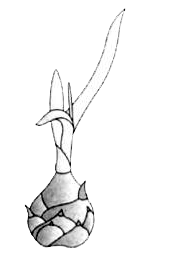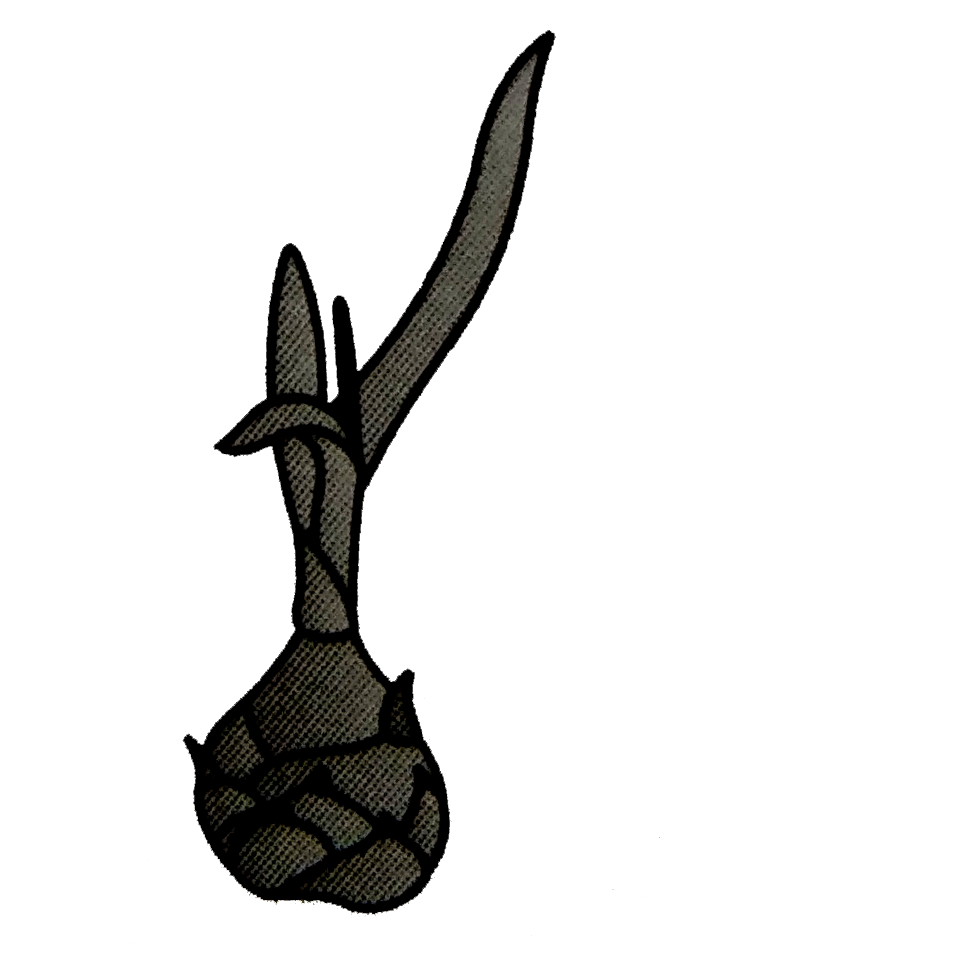The given vegetative propagule is

A
rhizome of Oxalis.
B
bulb of Onion.
C
bulbil of Agave.
D
corm of Amorphophallus.
Text Solution
The correct Answer is:C
Vegetative propagation is a method of multiplication in which a somatic part of the plant detaches from the body of the mother and develops into a new independent plant under suitable environmental conditions. The detachable somatic part involved in vegetative propagation is called vegetative propagule. Vegetative reproduction can be studied under the following subheadings:
1. Stem
Underground stem
Subaerial stem
Aerial stem
Bulbils
2. Leaves
3. Root
Stems:
Underground stem: It is non-green, food storing, perennating structure present below the surface of the soil. It is of several types like tuber, rhizome, bulb, etc.
Subaerial stem: It is a weak stem that takes the support of the ground for spreading. It is of three different types- offset, runner, sucker.
Aerial shoots: Each segment of the stem having at least one node can form a new plant, e.g., Sugarcane, Opuntia.
Bulbils: These are large size fleshy buds that are specialized for vegetative reproduction. For this, bulbil must fall from the plant and reach the soil. They can be present at variable positions on the plant. In Agave, bulbils are modified floral buds that develop on the floral Ananas, Dioscorea, Lily.
Leaves: Leaves of several plants having adventitious buds help in vegetative buds arise from the notches present at margins of leaves, e.g., Adiantum (walking fern). Begonia, Kalanchoe.
Roots: It was discussed that one of the prerequisites for vegetative reproduction is the presence of buds. Though bud is mainly the feature of the stem in some plant roots may also bear buds. These adventitious buds sprout to form new plants, e.g., Dahlia.
|
Updated on:21/07/2023
Related Playlists
Similar Questions
Vegetative propagule is a
View SolutionIdentify the given vegetative propagule.
 View Solution
View SolutionIdentify the given vegetative propagule.
 View Solution
View SolutionWhat are vegetative propagules ?
View SolutionMatch the organisms given in column I with the vegetative propagules given in column II.
 View Solution
View SolutionMatch the organisms given in column I with the vegetative propagules given in column II.
 View Solution
View SolutionMatch the following given in column 'A' with the vegetative propagules given in column 'B'
 View Solution
View SolutionVegetative propagule in Agave is as:
View SolutionVegetative propagule in Agave is as:
View SolutionWhat are the vegetative propagules in the following :
(a) Agave (b) BryophyllumView Solution

